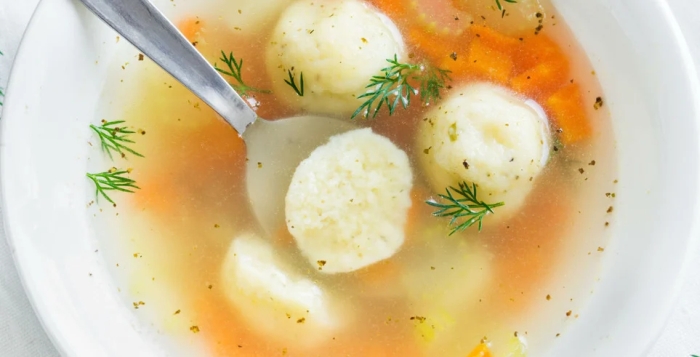
September 30, 2019
Original The Traval article posted at:
bit.ly/10-jewish-delicacies
Jewish cuisine and Jewish religion often come hand in hand, with many of the dishes influenced by religious holidays, celebrations, customs, and protocols. The typical dishes of Jewish cuisine often vary between regions, sometimes coming under the umbrellas of Sephardi, Mizrahi, and Ashkenazi traditions.
Aside from religion, cultural influences have also impacted on what we now know as Jewish cuisine. With the Jewish people migrating all over the world, foreign culinary traditions have also shaped the way Jewish dishes look today.
Keep reading to find out what 10 delicious Jewish delicacies you will love.
10. Served on Hanukkah: Latkes
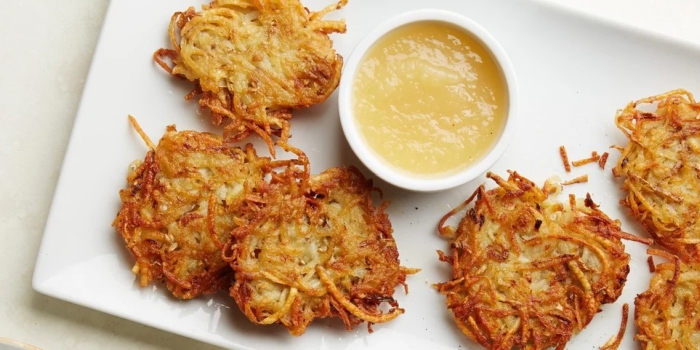
Many of the dishes in Jewish cuisine are associated with a religious holiday or celebration. One of these is latkes, which are commonly served on Hanukkah. Essentially fried potato pancakes, these can be topped with a range of ingredients, including the popular sour cream.
According to Spoon University, the religious element of latke is actually the oil that the pancakes are fried with rather than the potatoes themselves. Oil is a crucial element of Hanukkah, as the miracle of the holiday is that the oil that was supposed to burn for only one night lasted for eight.
9. Hearty Stew: Cholent
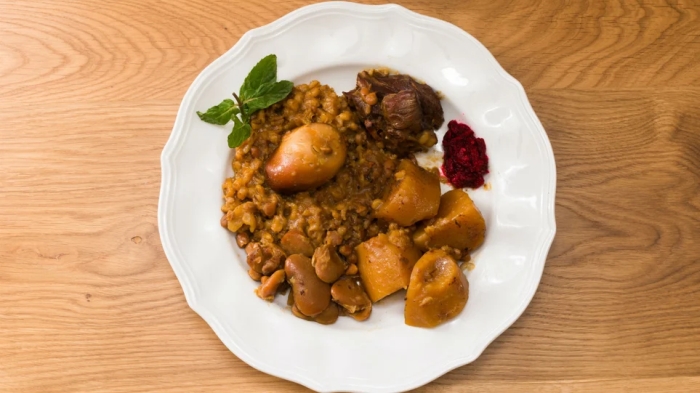
Cholent is the kind of all slow-cooked stews. This hearty dish cooks overnight and is usually served for lunch on the Sabbath, which falls on a Saturday. You can also find it at kosher restaurants. As Jewish cuisine varies between regions and traditions, cholent can also vary. In the Ashkenazi tradition, the dish often contains beans, potatoes, beef, and barley, according to Tasting Table.
In the Sephardic tradition, it can sometimes include rice, chicken, chickpeas, dates, eggs, and Middle Eastern spices such as turmeric. Cholent is also sometimes referred to as hamin.
8. Indulgent Pancakes: Mufletta
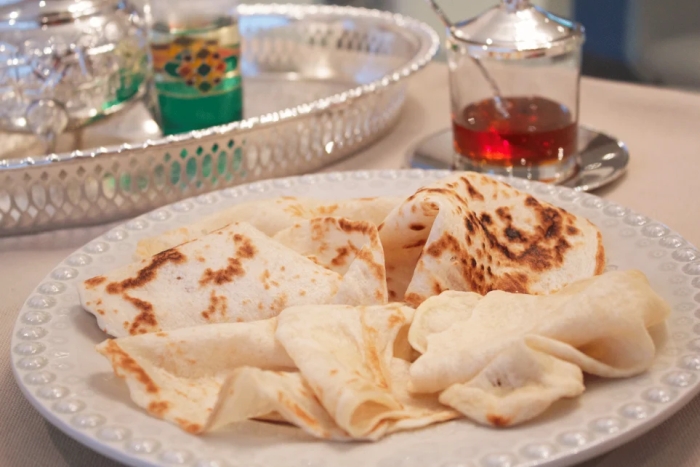
Mufletta is a dish that is mainly eaten by Sephardic Jews that come from Morocco. A type of flatbread, mufletta is commonly served with butter and honey. It is made from flour and yeast, served at the end of Passover.
During the week of Passover, some Jews abstain from eating chametz, or leavening. That means that this bread definitely can't be eaten during the holiday, but it is very welcomed at the end of it. The celebration that ends Passover is known as Mimouna in Northern Africa and marks the return to consuming chametz.
7. Jewish Casserole: Kugel
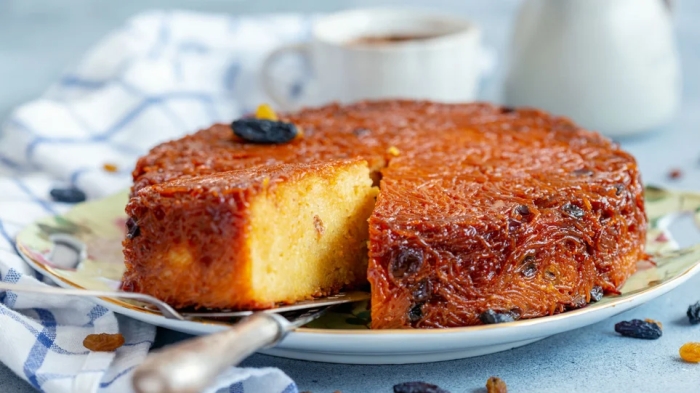
One of the most popular Jewish dishes, Kugel can be served as a dessert or a savory dish. Nothing beats this casserole, which has won a place in the hearts of Jews all over the world. The star ingredient of the dish is noodles or potatoes, depending on whether the version is sweet or savory
According to Auguste Escoffier School of Culinary Arts, a savory kugel side dish will normally be made with potatoes over noodles and is flavored with egg and onion. On the other hand, kugel that is served as dessert is often made with noodles, fruit, and nuts.
6. For Seafood Lovers: Gefilte Fish
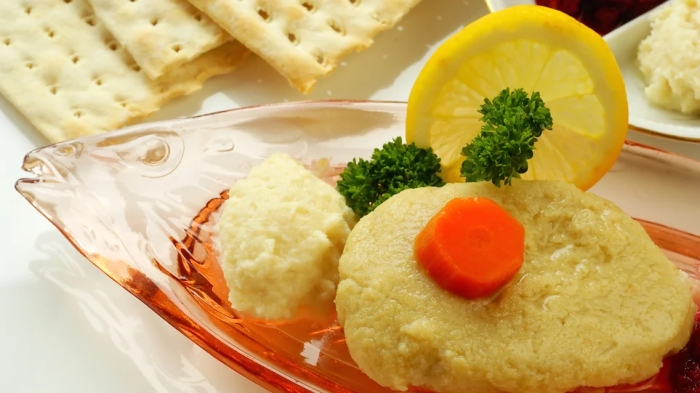
Gefilte fish has to be one of the most well-known Jewish dishes out there. Not everyone loves this appetizer, but it is still commonly eaten on the Sabbath. Eating fish on this day is said to attract a triple blessing, regardless of if you like the taste or not. Typically, the dish is also served on holidays by Ashkenazi Jews.
Gefilte fish consists of ground and filleted fish that's been poached. The fish in question can be anything from carp to salmon. Often, gefilte fish is served with pickled horseradish.
5. Jewish Croissant: Rugelach
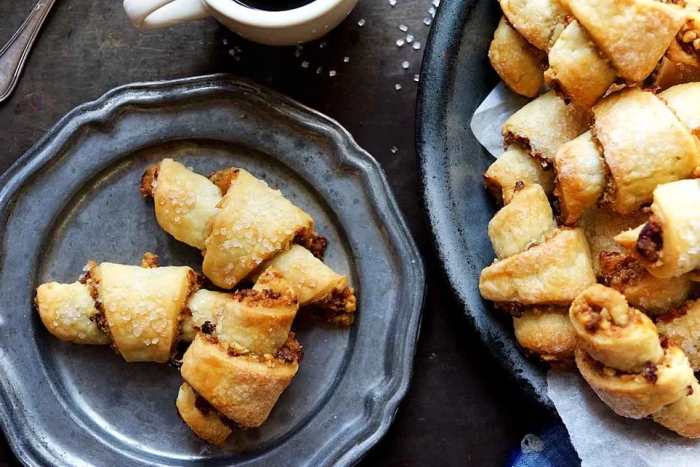
Jewish sweets are less talked-about and iconic than their savory counterparts, but that doesn't mean they're any less tasty. The Jewish answer to the French croissant is rugelach, a pastry that looks like a croissant with a few key differences.
Typically, the pastry that you find used in rugelach isn't as flaky and is made with cream cheese or cottage cheese as well as butter. Rugelach also comes filled with additions such as chocolate, nuts, raisins, or jam. Now super popular in Israel, this dish comes from the Jewish communities in Poland.
4. Comfort Food: Potato Knish
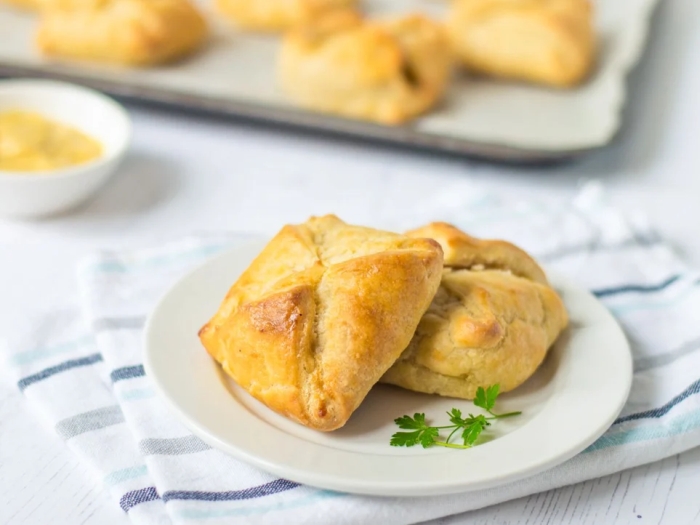
You will love potato knish, especially if you have a thing for carbs. Is it a dumpling? Is it a pie? Is it a bun? It's debated. But whatever it is, you won't be able to stop once you've tried it.
These golden pastries are filled with mashed potatoes and onions that have been fried to achieve a delectable flavor. The exact fillings can differ between recipes, with some including meat, sauerkraut, cheese, or spinach. The Spruce Eats explains that you pronounce it ku-nish, and that it can be likened to a British pasty.
3. Classic: Matzo Ball Soup
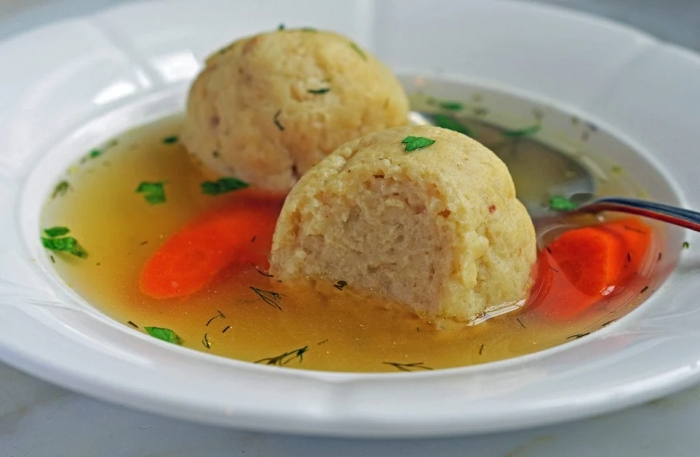
Everybody's heart of matzo ball soup, even if you're not Jewish. This classic Jewish recipe makes chicken soup even better (if that's possible!). Traditionally, matzo ball soup was served at the Passover Seder meal. The balls are made with matzo meal, chicken fat, egg, salt, and club soda, containing no yeast.
While this dish was traditionally served at Passover, it is now served all year round. Some matzo balls sink to the bottom of the bowl and are submerged in the soup, while others float. It's a matter of personal preference, but both are acceptable.
2. Delicious Crepes: Blintzes
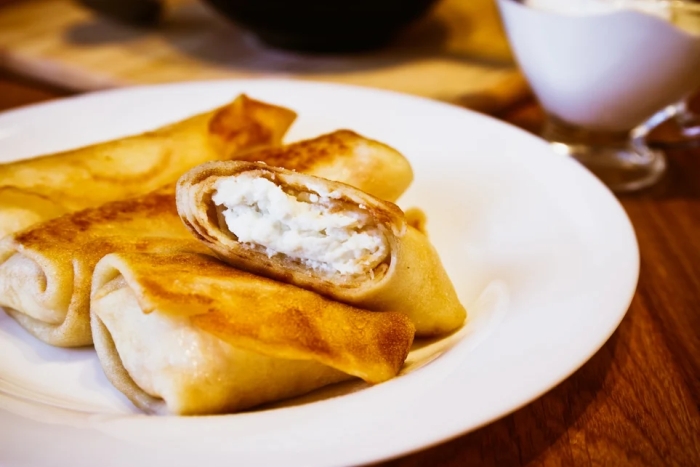
You can't really go wrong with crepes. Blintzes resemble Russian blini but are actually of Hungarian origin and are often eaten on the holiday of Shavout by Ashkenazi Jews. It is customary to eat dairy on this holiday, according to The Tasting Table, and so the blintzes are filled with farmer cheese. They are great for dessert but can also be eaten for breakfast.
Although they're delicious enough on their own, blintzes are sometimes made into a casserole. The most popular accompaniments for blintzes are sour cream that's been sweetened or a fruit sauce.
1. Sweet Cake: Babka
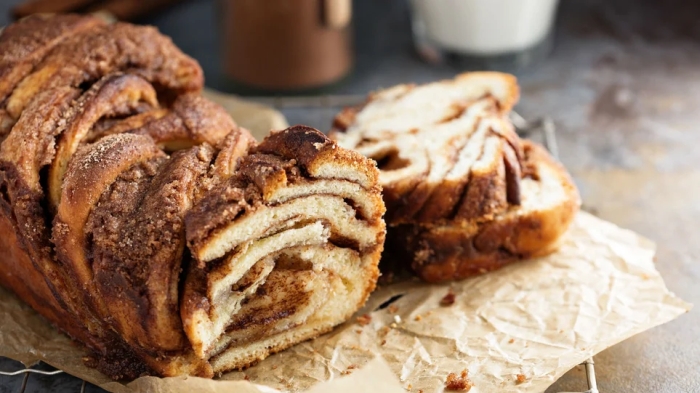
Speaking of Jewish desserts, another dish that you'll love is the sweet cake called Babka. Boasting an aesthetically pleasing marble pattern, this cake is made using cinnamon or chocolate (or sometimes both). Be warned: it's seriously addictive.
According to Prezi, babka originates from Eastern Europe, probably Poland or Ukraine. Today it is popular right through Eastern and Central Europe and is also commonly eaten in Israel. The name comes from the Slavic word babcia, which translates to grandmother. This is definitely the kind of sweet treat a grandmother would make!
 Return to Judaism / Jewish Articles
Return to Judaism / Jewish Articles